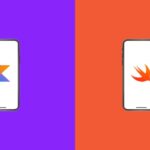If you’re looking to build a mobile app, you’ve likely come across two popular frameworks: Apache Cordova (formerly PhoneGap) and Ionic. Both allow you to create cross-platform apps using web technologies like HTML, CSS, and JavaScript. But which one is the better choice for your project? In this post, we’ll dive into the key differences between Cordova and Ionic to help you decide which framework is the best fit.
Difference Between Cordova and Ionic:
Development Approach:
Cordova serves as a platform for mobile app development, leveraging web technologies like HTML, CSS, and JavaScript, while granting developers direct access to native APIs through JavaScript. This approach offers high flexibility, enabling granular control over application behavior, but it demands additional effort for setup and configuration. In contrast, Ionic, built atop Cordova, simplifies mobile app development by providing pre-designed UI components and CLI tools. It abstracts complexities of native development, emphasizing ease of use and rapid development. However, this abstraction may limit direct access to low-level device features compared to Cordova, potentially impacting customization options.
Performance:
Cordova applications may experience performance challenges due to running web code within a native wrapper, although optimizations through native code integration can mitigate these issues. Ionic, on the other hand, prioritizes performance improvements by leveraging hardware acceleration and optimizing UI rendering techniques. Despite running within a Cordova wrapper, Ionic endeavors to deliver smooth and responsive user experiences, enhancing overall performance compared to traditional web-based approaches.
Plugin Ecosystem:
Cordova boasts a vast plugin ecosystem that extends its capabilities by providing access to a wide range of native device functionalities. Developers can leverage these plugins to enhance their applications with features such as camera access, geolocation, push notifications, and more. This extensive plugin support contributes to Cordova’s flexibility and adaptability for various use cases. In contrast, while Ionic is built on Cordova and can utilize the same plugins, it primarily focuses on providing a framework for UI components and application structure. While Ionic projects can integrate Cordova plugins seamlessly, the framework itself does not offer the same extensive plugin ecosystem as Cordova.
UI Components and Theming:
Ionic stands out for its rich set of pre-designed UI components and theming capabilities, making it easier for developers to create visually appealing and consistent user interfaces across different platforms. The framework offers a variety of components for common mobile app elements such as buttons, forms, lists, navigation, and more. Additionally, Ionic provides robust theming support, allowing developers to customize the look and feel of their applications to match their brand or design preferences. Cordova, on the other hand, does not offer built-in UI components or theming capabilities. Developers using Cordova typically rely on third-party libraries or custom implementations for UI design, which may require additional effort and expertise.
Tooling and CLI:
Ionic provides a comprehensive command-line interface (CLI) tool that streamlines various aspects of the development process, including project scaffolding, building, testing, and deployment. The Ionic CLI offers commands for generating components, services, and pages, as well as for running and debugging applications on different platforms. Additionally, Ionic’s CLI integrates with Cordova’s CLI for managing plugins and platform-specific configurations seamlessly. Cordova also offers a CLI tool for creating, building, and managing Cordova projects, but it focuses primarily on tasks related to the Cordova platform itself, such as adding platforms, installing plugins, and building application packages. While both frameworks offer CLI tools to facilitate development, Ionic’s CLI provides additional features and integrations tailored specifically for Ionic projects.
Community Support:
Cordova benefits from an active developer community, offering extensive documentation, tutorials, and resources, though updates and innovations may not be as rapid as with some other frameworks. Conversely, Ionic enjoys a vibrant community driven by its popularity and robust tooling. With extensive support and ongoing updates, developers have access to the latest features and improvements within the ecosystem, ensuring a supportive environment for development and troubleshooting.
Which Framework is Better For App Development?
Cordova is a solid choice for developers who require high flexibility and direct access to native APIs. It’s suitable for projects where customization and fine-grained control over application behavior are paramount. Cordova’s extensive plugin ecosystem also makes it a compelling option for accessing native device functionalities seamlessly.
Ionic, on the other hand, is well-suited for developers who prioritize ease of use, rapid development, and polished user interfaces. It offers pre-designed UI components, theming capabilities, and a comprehensive CLI tool that streamlines the development process. Ionic is particularly advantageous for projects where time-to-market and consistent design are critical factors.
Ultimately, the “better” framework depends on the specific needs and goals of the project. Developers should carefully evaluate the requirements, consider the strengths and weaknesses of each framework, and choose the one that aligns best with their objectives and development preferences. Additionally, factors such as community support, documentation, and ecosystem maturity should also be taken into account when making a decision.

